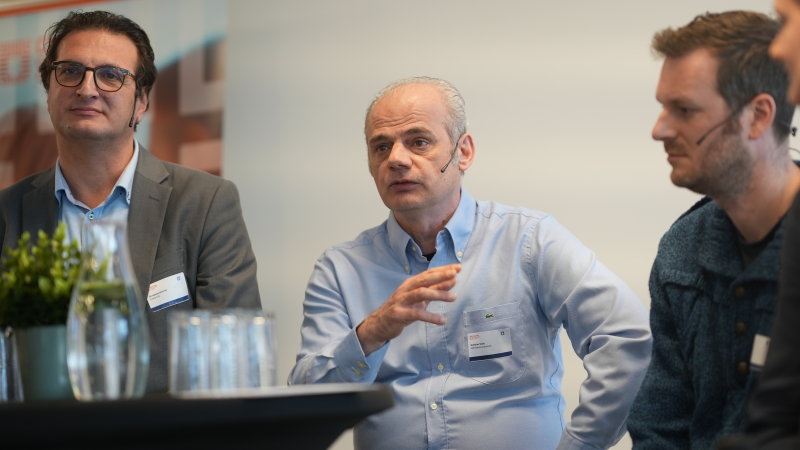Your cart is currently empty!

The AI-driven company: continuous ML
Continuous ML represents the stage where AI-enabled products become truly self-improving, explains Jan Bosch.
Continuous ML is the fourth stage of our AI-enabled product maturity ladder. Here, models and systems don’t merely adapt occasionally; they improve continuously as new data becomes available. This represents a fundamental shift from periodic updates to ongoing evolution and systems that are learning and improving continuously.
In order for this stage to be realized, several activities that earlier were outside the system itself, at least partially, need to be included in the operations of the system. These include, among others, data ingestion, retraining, deployment and monitoring. All these activities now occur automatically and continuously. The system doesn’t wait for a human to decide when to learn; it knows when to update, how to validate the new model and when to roll it out safely. As a human parallel, this could be viewed as akin to the “learning organization,” where the system exists at two levels simultaneously: the part of the system that conducts the tasks for which it was created and a part observing the first part and constantly seeking to improve it.
Continuous ML systems are characterized by three integrated capabilities: automated learning loops, self-supervision and continuous model validation. Automated learning loops can be viewed as an end-to-end automated pipeline consisting of data collection, model retraining, validation, deployment and monitoring. This is where the actual continuous learning takes place. Ideally, we achieve retraining cycles measured in hours or even minutes, not weeks or months.
These learning loops are managed through the self-supervision and governance capabilities present in the system. The system monitors its performance, detects drift and triggers retraining when accuracy drops or the data distribution changes.
The key capability required for this is continuous model validation. Often, there are at least two models present in the system: the old one and the newly trained one. Every new model version is automatically tested, benchmarked and compared to previous ones, typically using A/B testing, before being promoted to production.
As the concept can easily feel a bit abstract, I thought I’d share a few examples of systems where continuous ML would be highly beneficial. For instance, fraud detection is notoriously dynamic as fraudsters are constantly trying out new attack vectors. With continuous ML, models automatically learn from every new confirmed fraud case, adapting to new attack patterns faster than human analysts can respond.
As a second example, most predictive maintenance approaches rely on offline training. With continuous ML, equipment health models continuously update as new sensor and failure data become available, improving accuracy with each maintenance cycle. Especially for a fleet of products, this can lead to significant improvements as all system instances learn from each other.
Third, personalized services such as recommendation systems in e-commerce or media continuously optimize offers based on live user feedback and interaction data. This capability has existed for some time already and could be viewed as the first validation of the relevance of continuous ML.
Continuous ML uses well-known techniques, such as reinforcement learning, that, surprisingly, haven’t seen the same popularity as deep supervised learning and generative AI approaches. However, a situation where models learn optimal behavior through trial, feedback and reward, adjusting continuously as environments change, is of course highly desirable. Especially in the context of embedded systems, this can easily be expanded to federated reinforcement learning, where multiple agents, such as a fleet of cars or drones, learn locally but share updates centrally, allowing collective improvement without centralized data collection.
From a competition perspective, continuous ML is where the data and AI flywheel begins to spin rapidly as every interaction feeds learning and every improvement drives more usage, creating a compounding benefit. Companies that deploy this flywheel early will have a huge competitive advantage over those that lack all the learning that has taken place over months or years.
The benefits of continuous ML are significant. Systems are self-improving, learn much faster than traditional offline learning approaches, are resilient to data and model drift and build a competitive advantage that compounds over time. And as the company has built the infrastructure, it’s relatively easy to deploy new models in the existing system or add the infrastructure to other products.
Of course, as every medal has a backside, continuous ML has some drawbacks, too. First, the resulting system often has a high degree of complexity due to the automation pipelines, retraining orchestration and model monitoring. Consequently, the organization needs a significant degree of technical maturity. Second, ensuring that the autonomously evolving system indeed improves on the metrics that the company cares about can be quite complex, as noise, bias and overfitting can be hard to avoid. Third, there often is a not insignificant cost for infrastructure due to the need for data storage, compute and monitoring. Fourth, ensuring regulatory compliance is more complex as the system functionality and behavior are moving targets. Finally, the humans in the organization need to be ready to trust the system and insert human oversight in the right places in the system. When not managed properly, continuous ML can bring significant risks as a fully autonomous system can evolve in ways that are bad for business, unethical or even illegal.
However, in contexts where data patterns change continuously and rapidly, such as in fraud detection, security and when interfacing with users, continuous ML provides many benefits. Rather than jumping there in one fell swoop, organizations can climb the maturity ladder, building capabilities at the earlier stages that are needed in this stage, such as feedback loops, model orchestration and monitoring.
Continuous ML represents the stage where AI-enabled products become truly self-improving. The feedback loop between data, model and outcome is fully automated and the system’s intelligence and performance compound over time. This creates a powerful competitive moat: every new interaction makes the product smarter and harder to replicate. Of course, continuous ML requires both technical and organizational maturity and an engineering culture that treats learning as an ongoing process. To end with Aristotle: “We are what we repeatedly do. Excellence, then, is not an act, but a habit.” That isn’t just true for humans, but also for systems.


